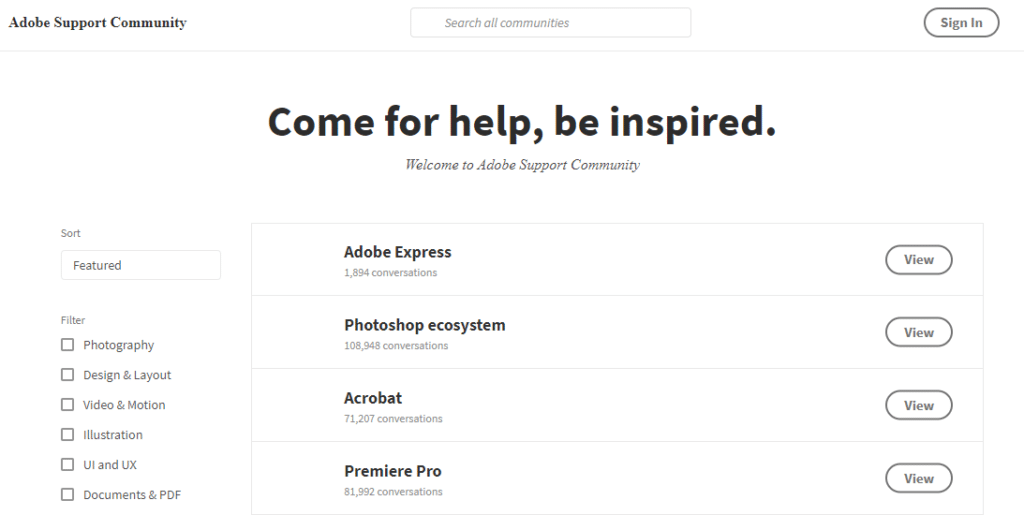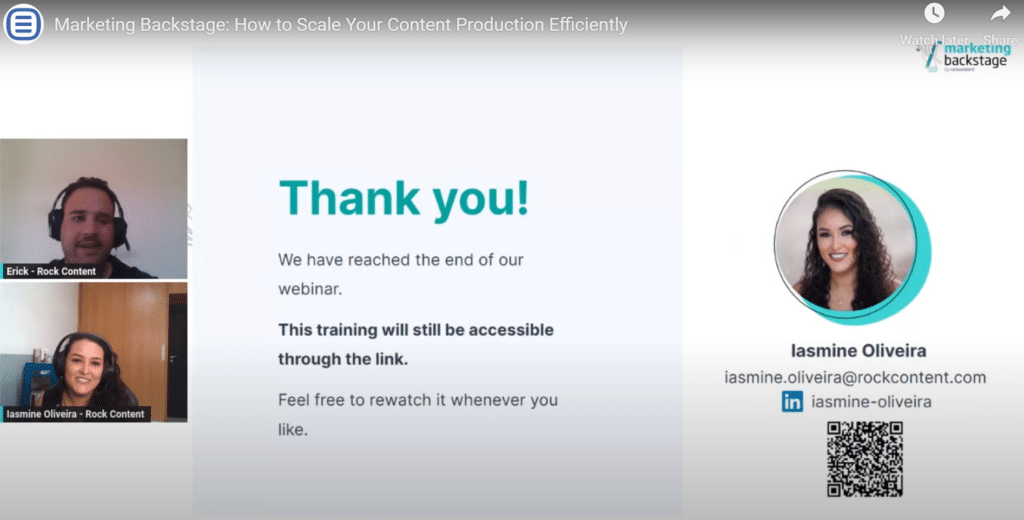Content Marketing is a potent approach harnessed by businesses to their advantage.
However, this does not mean that all companies will apply it in the same way. Different types of businesses have their own tricks to get the best results.
In this post, we will focus on Content Marketing for SaaS companies. As you keep reading, you’ll find out about 11 effective tactics you should definitely use.
Check it out!
- 1. Focus on Useful Content
- 2. Publish Case Studies
- 3. Build a Site Dedicated Only to Content
- 4. Use Q&A’s
- 5. Ask For Reviews And Ratings
- 6. Publish Guest Posts
- 7. Involve Users In Content Production
- 8. Invest In Other Formats
- 9. Monitor Relevant Indicators
- 10. Host Webinars and Online Workshops
- 11. Personalize Content for Different Buyer Personas
- Final Thoughts
1. Focus on Useful Content
Some people mistakenly assume that Content Marketing is meant to drive sales, like a heavy advertising piece in the form of an article or ebook.
However, the real aim is quite the opposite: Content Marketing aims to naturally attract customers by helping them make informed decisions throughout the sales funnel.
If content shouldn’t be focused on advertising, then what should it be like?
But don’t think the answer is simply being “fun” or “interesting.” While those are positive traits, they’re not the central point.
Remember, your goal is to establish authority and help customers better understand your product.
Therefore, the primary focus of content should be on delivering value.
In other words, when it comes to Content Marketing for SaaS companies, the key is to offer usefulness and relevance.
2. Publish Case Studies
A case study content is not ideal for attracting traffic, but it is essential for converting leads into sales.
A person can reach your company’s blog and read all the published articles there — especially if they are useful, as we pointed out in the previous item — and, yet, never buy anything.
But the moment they discover real success stories from your SaaS users, they will have a good reason to buy.
Case studies work especially well for B2B SaaS companies where the decision to invest in a vendor is more complex.
In this scenario, satisfied users’ cases can accelerate the process, especially if they are very detailed.
3. Build a Site Dedicated Only to Content
Having a blog within your organization’s website is expected. But some companies take Content Marketing so seriously that they create a specific site just to publish their materials.
The domain is different and, many times, not related to the company’s own domain.
In the world of SaaS companies, Adobe has also created a site exclusively for publishing its own content.
The point is that, by adopting this tactic, you can better position your content.
This gives your content more power and reputation on the web. Of course, as a result, it will also boost your company’s website.
4. Use Q&A’s
For a SaaS company in a very technical field, Q&As can be a very smart way to generate traffic without a lot of effort.
This format favors problem-solving, and people who need timely and objective information will be easily attracted to your page.
Would you like a good example?
Think about SaaS companies related to accounting or foreign trade, which are areas with numerous rules that may cause doubts for both newly graduated professionals and experienced managers.
When they need to quickly resolve one of these doubts, they will certainly appreciate a Q&A page offering high-quality content.
5. Ask For Reviews And Ratings
How about including content made by third parties in your strategy? Better yet, reviews and ratings from people who are considered authorities in your industry.
This kind of material ensures credibility, which is indispensable to convincing customers to adopt your SaaS solution.
Take into account that this decision crosses strategic barriers, such as software transition and the implementation effort.
So whatever you can do to make the experience easier, strengthen your brand’s credibility and reliability, and give prospects more confidence, is valid.
6. Publish Guest Posts
Inviting reputable people to post on your company’s channels is great. The opposite is also true.
Guest posts are articles written under your company’s name but published on a partner’s website, blog, social media, or other channels.
This third party, of course, needs to be chosen carefully. It must be someone related to the segment in which you operate and, at the same time, with a different or larger audience than yours.
Want a practical example?
Imagine a company that offers invoice issuing software publishing its guest post on a company’s blog that provides software for inventory control.
This would be a super-powerful tactic to increase their audience because their content will reach people who would not usually read it. And the most important thing is that there is no need to invest any financial resources.
You can get the same result that a paid ads campaign would produce (or maybe even better results) without spending a dime.
7. Involve Users In Content Production
Generally, when we talk about UGC, User-Generated Content, we are referring to one of these possibilities:
- reviews of your product;
- question-solving communities.
The first alternative is mostly observed in the e-commerce world. Meanwhile, the second alternative is much more interesting for SaaS companies investing in a Content Marketing strategy.
In fact, these user communities are not unknown in the world of technology; there are already communities for programming languages, games, equipment, etc.
Creating a community for your SaaS users is not a breakthrough, but it is a recipe for success.
For the user, these communities add an attraction that goes beyond their practical utility: interaction.
Meanwhile, for the company, it provides a means of generating content without having to produce it. In this case, it is just a moderation effort.

8. Invest In Other Formats
At the beginning of this post, we talked about using various channels for Content Marketing.
Now, let’s raise the bar a little higher: how about investing in different formats?
When we read the word “content”, we automatically remember texts, but the truth is that this is not the only format, and in fact, it may not even be the most effective one.
A large portion of the audience that consumes content on the internet prefers audio or even video.
Our suggestion, therefore, is that you incorporate podcasts and vlogs into your array.
They allow you to do things that wouldn’t look so good in an article or ebook, such as a live demonstration of your SaaS solution.
Such content is also a way to humanize the brand, literally giving it a voice and a face.
Plus, they can be more convenient for your audience, which directly impacts engagement.
9. Monitor Relevant Indicators
Indicators are very powerful. They are just like an aircraft’s control panel that tells the crew when something is going wrong, so they can take action before it’s too late.
This is how you can prove your Content Marketing strategy’s success or even make adjustments if necessary. Let’s see some examples of relevant indicators!
Leads by Lifecycle Stage
This is an indicator that measures the number of unqualified leads, those in the marketing qualification stage and those in the sales qualification stage.
Thus, it is possible to compare the proportions between them, which also helps identify where bottlenecks may be slowing down your sales funnel.
Leads/Customers Rate
The primary goal of Content Marketing for SaaS companies is to generate leads that you can, through the right processes, convert into customers.
There is no point in completing only half of this goal, generating leads without acquiring new customers.
For this reason, it is relevant to track an indicator that shows the ratio between them.
The ideal ratio is close to 1, which would indicate that all leads are being converted into customers.
Of course, this does not really happen, but keep an eye on it so that the ratio between leads and customers does not get out of control!
Leads per channel
You can develop Content Marketing through different channels such as blogs, social media, and email. So, it is a good idea to monitor how many leads each one of them is generating.
This way, you can identify which ones are more profitable for your strategy and focus efforts on those that will bring a better return.
10. Host Webinars and Online Workshops
Webinars and online workshops are dynamic tools that enable SaaS companies to forge meaningful connections with their target audience.
These interactive sessions transcend traditional content formats by fostering real-time engagement and providing an immersive learning experience. Hosting webinars and workshops offers several strategic advantages:
In-depth Education: Webinars and workshops allow you to delve deep into complex topics related to your SaaS solution. You can provide in-depth insights, demonstrate features, and share use cases, enabling participants to gain a comprehensive understanding of your product’s value proposition.
Thought Leadership: By sharing expert knowledge and insights during these sessions, you position your SaaS company as an industry thought leader. Participants perceive your brand as a reliable source of information and expertise, fostering trust and credibility.
Direct Interaction: Webinars and workshops facilitate direct interaction between your team and potential customers. Attendees can ask questions, seek clarifications, and engage in discussions, creating a personalized experience that addresses their specific concerns.
Lead Generation: Participants typically register for these sessions, providing you with valuable contact information and insights into their interests. This data can be used for follow-up communication and targeted marketing efforts.
Content Repurposing: Webinar recordings can be repurposed into various forms of content, such as blog posts, infographics, or social media snippets. This extends the lifespan of your content and maximizes its reach across different platforms.

11. Personalize Content for Different Buyer Personas
Personalization is a cornerstone of successful Content Marketing for SaaS companies. Tailoring your content to cater to different buyer personas within your target audience enhances engagement, resonance, and conversion rates.
Here’s how to personalize your content effectively:
Segmentation and Research: Begin by segmenting your audience into distinct buyer personas based on factors such as demographics, job roles, pain points, and goals. Conduct thorough research to understand their unique needs, challenges, and preferences.
Customized Messaging: Craft content that speaks directly to the specific concerns and aspirations of each buyer persona. Address their pain points and offer solutions that align with their individual goals. Use language, examples, and references that resonate with their industry or role.
Content Formats: Different personas may prefer consuming content in various formats. Some might gravitate towards in-depth whitepapers, while others prefer quick video tutorials. Cater to these preferences by diversifying your content formats and delivery channels.
Personalized Journeys: Map out personalized customer journeys for each persona. Create content that guides them through different stages of the sales funnel, from awareness to consideration and decision-making. Provide relevant information and resources at each touchpoint.
Behavioral Data: Leverage behavioral data and analytics to further refine your personalization efforts. Monitor how different personas interact with your content, identify patterns, and adjust your strategy based on insights gained from their interactions.
Final Thoughts
We have reached the end of our list! Among the 11 foolproof tactics for Content Marketing for SaaS companies presented here, you have found tips for content development and recommendations for performance indicators.
Now, how about taking the next step in your strategy? Get to know WriterAccess.
Our content creation platform is ideal to help you streamline your content production, combining the efficiency of AI-powered tools with the creativity of human writers.
Give it a try today! Enjoy 14 days of free access to our network of expert writers. Discover for yourself what great content can do for your business.









